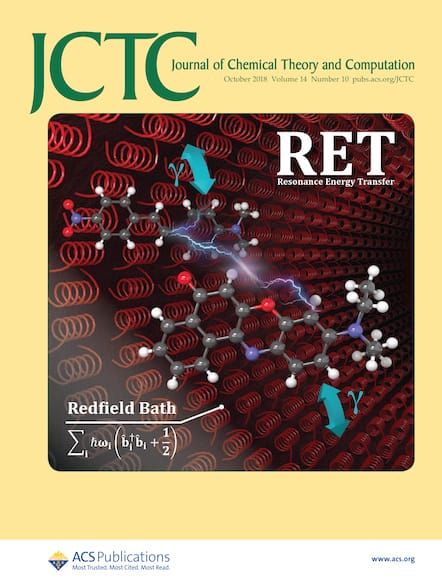模拟非晶材料拉曼光谱的多步方法:以Li3PS4玻璃电解质为例。
IF 5.5
1区 化学
Q2 CHEMISTRY, PHYSICAL
引用次数: 0
摘要
眼镜被广泛应用于各种各样的应用,这是由于其固有的缺乏长程排序。这种特性使得描述它们的原子性质具有挑战性。为了促进和加速玻璃的研究,计算模拟,如分子动力学或蒙特卡罗模拟,通常用于模拟这些非晶材料的结构。然而,验证和改进模型需要将这些模拟与光谱数据进行比较,这在计算上是相当具有挑战性的,因为单元胞中需要原子的数量来解释这种紊乱。在本文中,我们提出了一个多步骤的方法来模拟特定的拉曼光谱,该光谱可以解释非晶材料中的远程相互作用。这种方法,从分子动力学到嵌入式簇计算,使我们能够定义每个结构单元的拉曼特征,并重建玻璃电解质Li3PS4的拉曼光谱,实现低计算成本和与现有光谱实验数据的高一致性。本文章由计算机程序翻译,如有差异,请以英文原文为准。
Multistep Approach for Simulating Raman Spectra of Amorphous Materials: The Case of Li3PS4 Glass Electrolyte.
Glasses are widely used for their various applications, which arise from their inherent lack of long-range ordering. This characteristic makes it challenging to describe their atomic properties. To facilitate and accelerate glass research, computational simulations, such as molecular dynamics or Monte Carlo simulations, are commonly employed to model the structure of these amorphous materials. However, verifying and later refining the models require comparing these simulations with spectroscopic data, which can be quite computationally challenging due to the number of atoms needed in the unit cell to account for the disorder. In this paper, we propose a multistep approach for simulating specifically Raman spectra that accounts for long-range interactions in amorphous materials. This approach, going from molecular dynamics to embedded cluster calculations, allows us to define the Raman signature of each structural unit and reconstruct the Raman spectrum of the glass electrolyte Li3PS4, achieving low computational cost and high agreement with existing spectroscopic experimental data.
求助全文
通过发布文献求助,成功后即可免费获取论文全文。
去求助
来源期刊

Journal of Chemical Theory and Computation
化学-物理:原子、分子和化学物理
CiteScore
9.90
自引率
16.40%
发文量
568
审稿时长
1 months
期刊介绍:
The Journal of Chemical Theory and Computation invites new and original contributions with the understanding that, if accepted, they will not be published elsewhere. Papers reporting new theories, methodology, and/or important applications in quantum electronic structure, molecular dynamics, and statistical mechanics are appropriate for submission to this Journal. Specific topics include advances in or applications of ab initio quantum mechanics, density functional theory, design and properties of new materials, surface science, Monte Carlo simulations, solvation models, QM/MM calculations, biomolecular structure prediction, and molecular dynamics in the broadest sense including gas-phase dynamics, ab initio dynamics, biomolecular dynamics, and protein folding. The Journal does not consider papers that are straightforward applications of known methods including DFT and molecular dynamics. The Journal favors submissions that include advances in theory or methodology with applications to compelling problems.
 求助内容:
求助内容: 应助结果提醒方式:
应助结果提醒方式:


